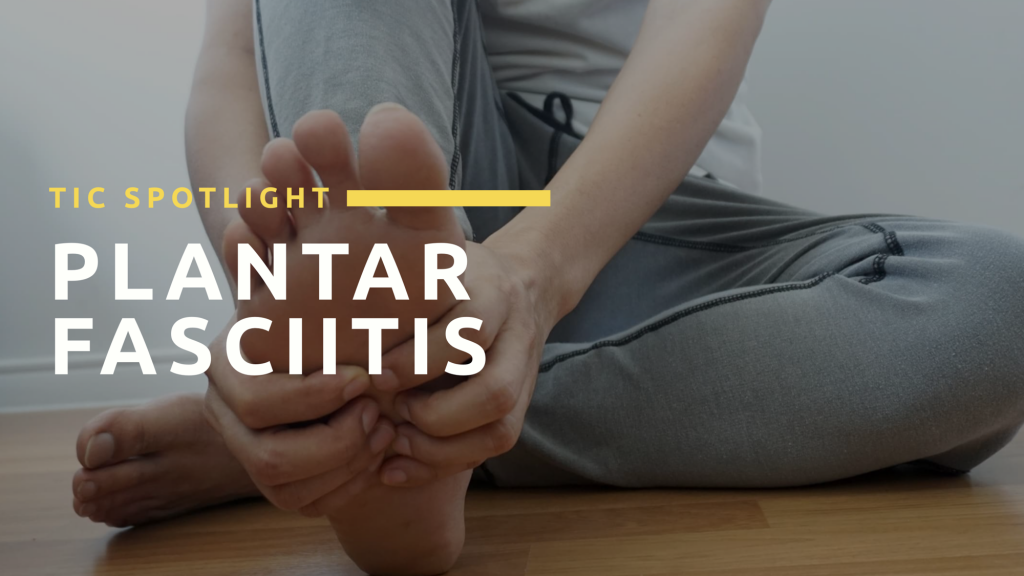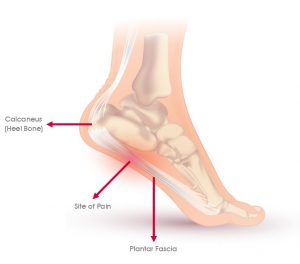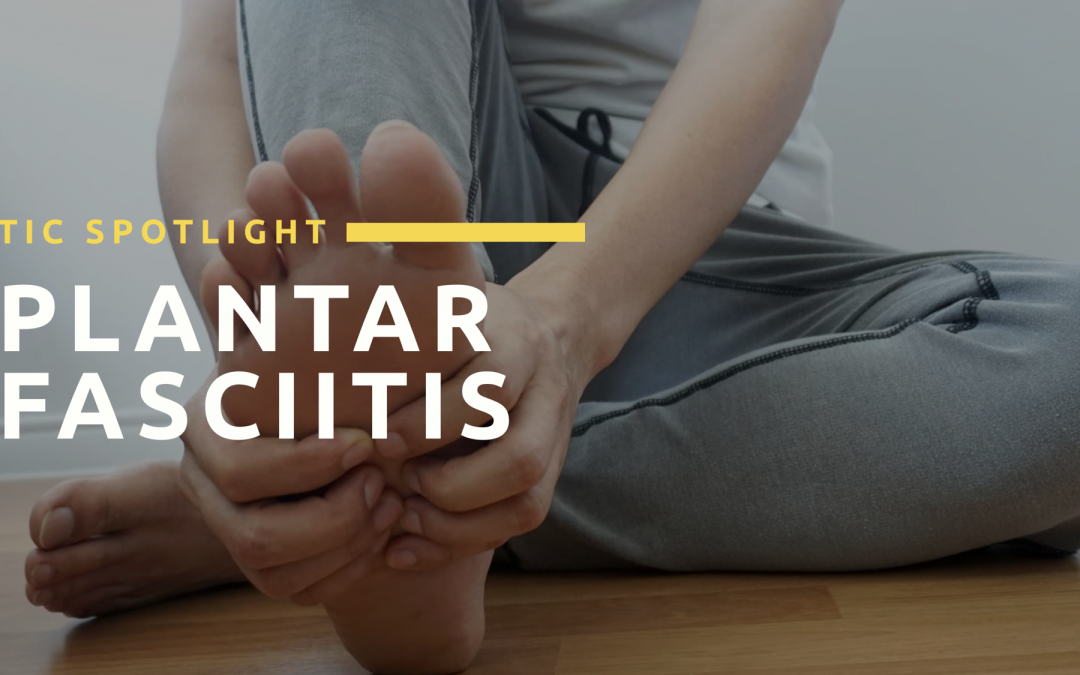
For the third edition of ‘TIC Spotlight’ we are focusing on a common injury that is well known but often left to “settle on its own”, resulting in a long and painful recovery. With the country in lockdown and the closure of gym and leisure facilities, many will be turning to the outdoors for a sudden increase in walking and running. Read on to understand how you can recognise the symptoms of plantar fasciitis and be equipped with the right tools to prevent symptoms from developing and keep yourself active outdoors!
Plantar Fasciitis
What is it?
Plantar fasciitis is a condition which affects the thick band of connective tissue running along the sole of the foot from the heel to the toes. The role of the plantar fascia is to provide strong support to the arch of the foot to increase foot and ankle stability during activities involving standing and walking. When excessively or repetitively stressed, this band of tissue can become irritated and painful. Due to the length of the plantar fascia these symptoms can be experienced underneath the heel, in the arch of the foot or on the back of the heel.
Symptoms

The most common complaint from patients with plantar fasciitis is pain underneath the heel or in the arch of the foot. Pain increases gradually over a period of time and this can make it difficult to establish the exact cause of symptoms. Clients often report symptoms being worse first thing in the morning and after getting up from periods of inactivity like watching the TV.
Other common symptoms include;
- Dull aching pain that becomes sharp when standing or walking
- Pain is often worse in the morning or after any periods of rest
- Tenderness is usually felt under the heel or along the sole of
- the foot
- A tight Achilles’ tendon and/or calf muscle which can cause a
- reduction in ankle mobility
- An increase in pain when walking barefoot on hard surfaces
Causes
An exact cause of plantar fasciitis remains unclear, however there are pre-disposing factors which can increase the risk of symptoms developing. These include;
– High or low arches in the feet.
– Excessive over-pronation of the foot when walking or running, increasing the stress placed through the arch of the foot.
– Excessive tightness in the muscles and tissues of the lower leg (calf etc.)
– Reduced mobility in the big toe or ankle joints.
– A sudden increase in impact activity including walking and running.
– Wearing shoes with poor arch support.
Plantar fasciitis typically occurs more frequently in females, particularly those aged 40-60 years old. Research also shows there are also more cases among the athletic population.
Common Myths
Plantar fasciitis pain is because of inflammation – False!
Despite popular belief (even amongst some professionals!) symptoms of plantar fasciitis are NOT primarily the result of inflammation but mainly micro-trauma developed within the tissue and therefore ‘plantar heel pain’ is a more suitable term and ‘guided’ active management strategies are recommended over previously recommend ‘rest’.
Only athletes get plantar fasciitis – False!
Plantar fasciitis can affect both athletes and non-athletes, with an occurrence rate of approximately 1 in 10 adults. However, it is shown to be more common in people who’s occupation involves long periods of standing and/or walking, and those who regularly take part in impact activity.
Plantar fasciitis is a torn muscle – False!
The plantar fascia is a strong fibrous connective tissue with different properties to muscles. Due to it’s thick nature it is more likely that inflammation and micro trauma from overload or degeneration of the tissue will occur.
Plantar fasciitis is scar tissue and needs to be ‘broken up’ – False!
To ‘deform’ the plantar fascia just 1% would require forces far outside of the normal physiological range. Therefore it is not possible to ‘break up’ scar tissue or adhesions. Rather the tissue wants to be manipulated to desensitise the area and allow for a slide and gliding of the tissue to ease symptoms.
How is it treated?
In most cases plantar fasciitis can be treated and managed conservatively using a combination of the methods including;
– Stretching of the plantar fascia, Achilles’ tendon and calf
– Shoe inserts
– Therapeutic ultrasound
– Ankle joint mobilisation
– Strength exercises
– Taping
– Massage or manipulation
– Medical acupuncture
More recently the most effect treatment we have been using here in the clinic that has been getting great results in relieving the symptoms of plantar fasciitis for our clients is our Extracorporeal shockwave therapy (ESWT).
What Can You Do?
Apply ice for a maximum of 20 minutes 3-4 times per day, particularly after any periods of standing or walking.
TIC TOP TIP: fill a water bottle 3/4 with water and freeze. Roll your foot over the frozen bottle – this will massage your plantar fascia whilst reducing the inflammation. A frozen golf ball will also help for those that are feeling braver!
Vary your form of exercise. By cross-training you will work different parts of your body and avoid causing repetitive stress to your foot. This is a great way to maintain fitness whilst avoiding placing repetitive stress through your feet.
Wear supportive footwear with a stiff outer sole and a soft absorbent inner sole. You also want to ensure you have good arch support.
Seek help from a professional. As you can see from this article, there is so much that can be done for plantar fasciitis to speed up recovery and avoid months (years in some cases) of rest and inactivity.
If you know anyone that the information in this article could help, then please feel free to pass it on and share with your family and friends.
